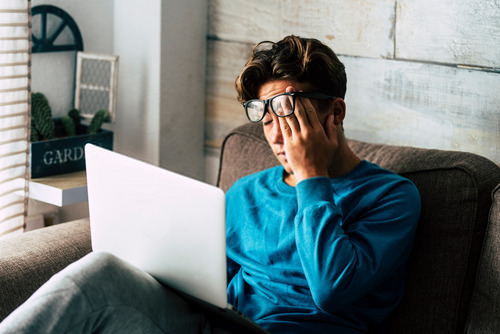

This is an excellent option if you use laptops, cell phones, and other devices along with standard desktop computers. Tip 5: Consider anti-glare glassesĪnti-glare glasses have a coating that reduces glare and reflections to protect your eyes. The result is a more pleasant viewing experience that won’t result in eye fatigue and strain. Tip 4: Use an anti-glare filterĪnti-glare screen filters are a simple way to cut down on the amount of light that reflects off of your computer screen while you work. You may also need to turn off any harsh lights or position your screen to prevent direct sunlight from causing glare. Try tackling the glare in your office to ease the strain on your eyes.ĭepending on your office setup, you may need to partially close blinds or draw shades halfway closed. Offices that have too much natural or artificial light increase glare on your screen, which spells trouble for your eyes. When it comes to screen time in the workplace, lighting is everything. This not only reduces the chances of eye strain it prevents neck strain. You should sit at least 20-30 inches away from your screen and position the top of your screen at eye level. Adjusting your screen position is a simple and easy step you can take to protect your eyes. People have a habit of sitting close to their computer screen, but sitting too close to your screen contributes to eye strain.


#SCREEN BREAKS FOR EYES HOW TO#
Our team at McDonald Eye Associates offers comprehensive eye exams to detect any visual issues and can explain how to keep your eyes safe from eye strain while at work. Scheduling a comprehensive eye exam is one of the key steps in preventing eye strain related to computer screens. Our experts at McDonald Eye Care Associates discuss practical tips to protect your eyes from eye strain. While giving up computers all together may not be an option, you can take steps to keep your eyes safe while on the job and at home. That eye strain can lead to blurry vision and even headaches and neck pain.Īccording to recent studies, as many as 90% of people who spend extended time in front of digital screens experience some sort of eye strain or related eye issues. But employers are still responsible for making sure work activities are properly planned and that users take suitable breaks.Chances are, you use computers in the workplace, and while they’re helpful in a multitude of ways, they can cause eye strain.
#SCREEN BREAKS FOR EYES SOFTWARE#
Break-monitoring softwareīreak-monitoring software can remind users to take regular breaks. If there are no natural changes of activity in a job, employers should plan rest breaks.īreaks or changes of activity should allow users to get up from their workstations and move around, or at least stretch and change posture. In most jobs it is possible to stop DSE work to do other tasks, such as going to meetings or making phone calls. Ideally, users should be able to choose when to take breaks. For example 5 to 10 minutes every hour is better than 20 minutes every 2 hours.

Take short breaks often, rather than longer ones less often. It depends on the kind of work you are doing. There is no legal guidance about how long and how often breaks should be for DSE work. The law says employers must plan work so there are breaks or changes of activity for employees who are display screen equipment (DSE) users.


 0 kommentar(er)
0 kommentar(er)
